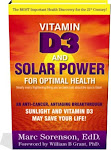It is undeniable that sunscreen use has profoundly increased in the past few decades, and in spite of that increase, the incidence of melanoma (CMM) continues to climb in the US. A new report, actually a clinical review in the Journal or the American Board of Family Practice,[1] comes to the following conclusions:
1. “Despite the availability and promotion of sunscreen for decades, the incidence of CMM continues to increase in the U.S. at a rate of 3% per year.”
2. There currently is little evidence that sunscreens are protective against CMM.
3. A number of studies suggest that the use of sunscreen does not significantly decrease the risk CMM, and may actually increase the risk of both CMM and sunburns.
The author of the report, Dr. Margaret Planta, also notes that the environmental protection Agency (EPA), states that “there is no evidence that sunscreens protect you from malignant melanoma.”[2]
The Melanoma International Foundation has (MIF) has stated, “Melanoma is epidemic: rising faster than any other cancer and projected to affect one person in 50 by 2010, currently it affects 1 in 75. In 1935, only one in 1500 was struck by the disease.” In other words, as sun exposure has dramatically decreased, melanoma has exponentially increased.[3] Quite obviously, the use of sunscreens has been one reason for the decrease in sunlight exposure. Consider this: if UVR exposure is the cause of CMM as stated by the IMF, there should be a concomitant decrease in melanoma as sunscreen use has increased. However, according to Kline & Company, a research group, sales of sunscreens in 1972 were $33 million; in 2008, sales were $650 million.[4] In addition, according to the Fredonia Market Research Group Company, the sales of sunscreens used in cosmetics in 2007 were $130 million.[5] Interestingly, the MIF suggests that we must do a better job of teaching people to avoid the sun. Isn’t there something terribly wrong with that reasoning?
Sunscreen is a big business that is of no real value to anyone but those who sell it. Follow the money and you will see the reason for the continuing promotion of sunscreens. So hats off to Dr. Planta, who has done her part to expose the sunscreen swindle. After her analysis, she states … “providers may need to alter their advice regarding sunscreen use for CMM prevention.” Amen.
[1] Margaret B. Planta, MD Sunscreen and Melanoma: Is Our Prevention Message Correct? J Am Board Fam Med 2011;24:735–739.
[2] United States Environmental Protection Agency. Sunscreen: The Burning Facts. Available at: http://
[3] Melanoma International Foundation, 2007 Facts about melanoma. Sources: : National Cancer Institute 2007 SEER Database, American Cancer Society's 2007 Facts and Figures, The Skin Cancer Foundation, The American Academy of Dermatology.
[4] Kline & Company's Cosmetics & Toiletries USA Annual Service (1972 and 2008 editions).
[5] Fredonia market research group report, 2009.

